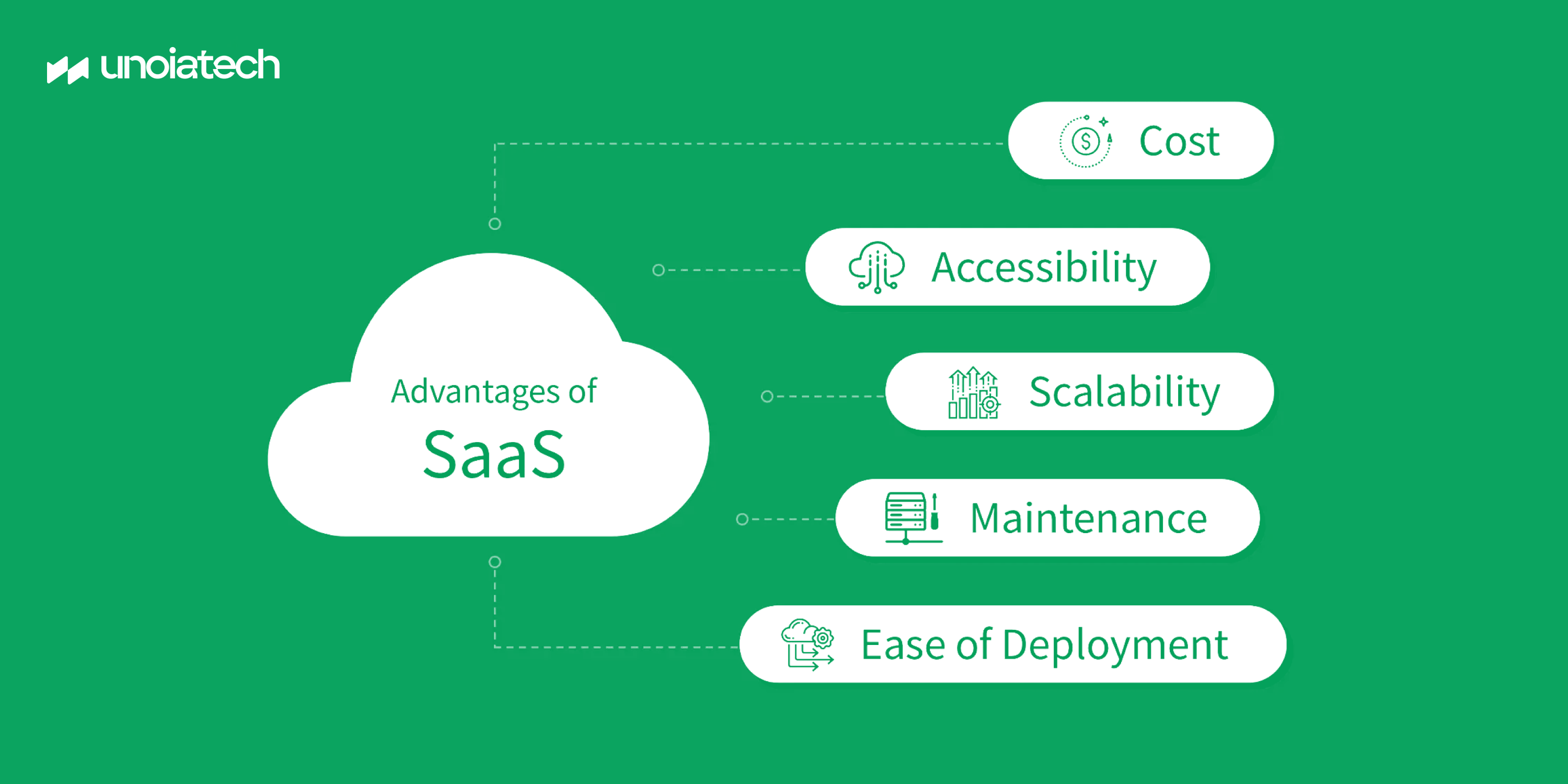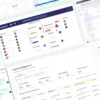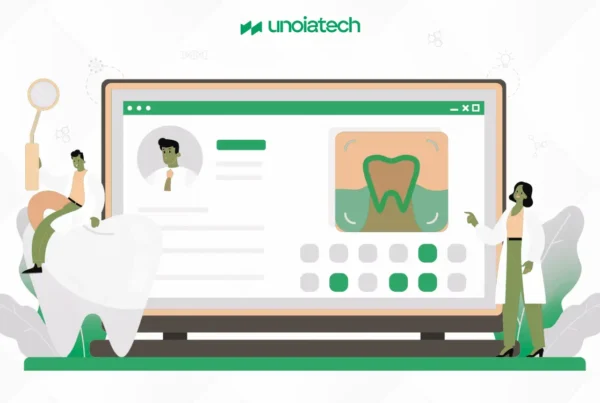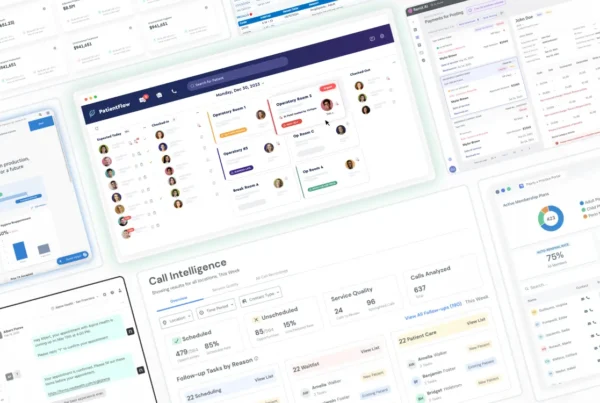
If your leads are thinking about switching from their on-premise software to SaaS for their businesses, this guide is for you. I’ve outlined the basics to help you explain what SaaS is, how it compares to on-premise software, and the top 7 reasons businesses should consider SaaS.
No matter the type of business you’re targeting, SaaS is likely a great fit for their needs. Read on to learn more
What is SaaS (Software-as-a-Service)?
When potential clients ask you to explain SaaS, here’s how to break it down:
SaaS, or Software-as-a-Service, refers to web-based software hosted and maintained on the Cloud. Cloud service providers (CSPs) offer the software, accessible through a web browser, while handling maintenance, updates, and hosting.
SaaS products are typically subscription-based. With a subscription, users access the software they need to run their businesses without the hassle of maintaining it themselves. The CSP manages everything, letting businesses focus on growth.
SaaS companies rely on subscriptions for revenue, so managing churn rate is critical. They aim to ensure customers adopt the service for the long term. Fortunately, SaaS sees a high adoption rate, with most users sticking around after trying the service.
Examples of SaaS
Most people have encountered SaaS, often without realizing it, as the model has expanded across industries. The COVID-19 pandemic fueled even more demand for cloud services due to the shift toward remote work. Here are some well-known SaaS examples:
- Zoom : Zoom became a household name in recent years, offering cloud-based video conferencing. It helps businesses and individuals connect remotely.
- Salesforce : Salesforce is widely used for customer relationship management (CRM), allowing employees from different departments to easily access client information. Its user-friendly design suits all skill levels.
- Office 365 : With around 1.4 million U.S. subscribers, Office 365 moved Microsoft’s popular tools to the cloud, replacing traditional licensing.
These companies measure success through metrics like monthly recurring revenue (MRR) and annual recurring revenue (ARR). As businesses increasingly adopt SaaS solutions, vendors continue to thrive.
How is SaaS different from IaaS and PaaS?
Infrastructure-as-a-Service (IaaS) and Platform-as-a-Service (PaaS) are similar to SaaS in that they all use cloud computing to replace traditional software and hardware. However, SaaS is the most complete solution in terms of functionality.
SaaS providers handle everything, from hosting to upgrades to infrastructure. It’s important for your clients to know that they have minimal responsibilities when it comes to managing the software.
Like SaaS, IaaS and PaaS pricing is typically subscription-based, with little to no upfront costs. Startups offering these services aim to provide features that traditional software solutions can’t match.
| Feature | SaaS | On-Premise Software |
|---|---|---|
| Pricing Model | Subscription-based (monthly or annual) for all users | Licensing fees required per user or device |
| Installation | Web-based, no installation needed | Requires hardware and installation on each device |
| Subscription Flexibility | Use as long as needed with easy cancellation | Contracts can be difficult to terminate |
| Maintenance & Upgrades | Handled by the provider | Requires in-house maintenance and upgrades |
| Accessibility | Accessible via the Cloud from anywhere | Limited to on-premise devices |
| Onboarding | User-friendly with easy onboarding | Often requires extensive training |
SaaS vs. On-Premise Software
On-premise software operates very differently from SaaS. While it may have been the traditional choice, many businesses find on-premise solutions to be outdated and cumbersome. In contrast, SaaS offers on-demand services with real-time access to the applications businesses need to run smoothly.
Compared to on-premise software, SaaS is more cost-effective. Its pricing models are generally lower, avoiding the hidden fees and hefty upfront investments that are typical with traditional software.
How is SaaS Different from On-Premise Software?
Let’s break down the key differences between what your clients may be using now and what SaaS can offer. Since SaaS is subscription-based, there are no costly licensing fees, which makes it less expensive for each device. This is one of the major advantages of SaaS.
SaaS also eliminates the need for hardware since everything is online. This makes it highly versatile and accessible from anywhere—a big plus for businesses with remote teams.
7 Benefits of SaaS for Businesses
Now that we’ve covered what SaaS is, let’s explore the benefits it can offer. Whether your customers manage large corporations or small businesses, SaaS applications can streamline their operations.
As long as there’s an internet connection, businesses can start using SaaS, which makes it an easy sell.
1. Cost-Effective: SaaS Maximizes Value
SaaS can save your clients significant costs. Unlike traditional software, SaaS eliminates upfront fees and licensing costs, plus the installation is practically free. Why pay for something that doesn’t need to be installed?
Clients can also customize their subscription based on their needs, ensuring they only pay for what they use. Payment is flexible, typically subscription-based, which means they avoid spending on hardware or software that might not work for them.
And if SaaS doesn’t meet their expectations, they can easily cancel their subscription without hassle. (But let’s aim for success!)
2. Accessibility: SaaS Wherever You Go
Traditional software can tie users to the office, but with SaaS, work follows you. Teams can collaborate remotely, accessing critical business apps anytime, anywhere. SaaS makes self-service and customer interaction easier.
With remote work on the rise, SaaS ensures businesses can operate smoothly no matter where their workforce is located. It helps overcome the challenges that come with hybrid or remote setups by providing a seamless user experience from anywhere.
3. Scalability: SaaS Grows With Your Business
SaaS platforms are built to scale. Whether a business is growing or downsizing, they can adjust their subscription plan as needed. Unlike traditional software, which can be difficult to expand, SaaS solutions adapt easily.
These platforms are designed to meet clients where they are—growing with them or scaling down to reduce costs as business needs change.
4. Data Storage: Always Backed Up With SaaS
SaaS provides real-time data storage via the cloud. Clients can select the storage size they need and adjust it as their business evolves. This ensures they aren’t paying for unnecessary space or sacrificing scalability.
With the cloud, there’s no cap on storage. Businesses can grow without worrying about running out of space, and SaaS ensures that all data is safely backed up.
5. Security: SaaS Keeps Data Safe
SaaS providers leverage powerful IT infrastructures to keep business data secure. Built-in backup systems ensure that data is protected even if servers crash. Regular backups offer peace of mind, and sensitive information is stored securely in the cloud.
This robust protection gives businesses the confidence that their, and their customers’, private data is in safe hands.
6. Compatibility: SaaS Integrates Seamlessly
SaaS is built to work across various platforms using APIs, making it highly compatible with existing technology. Plus, the provider manages updates and maintenance, so users always work on the latest version without compatibility issues.
7. User-Friendly: SaaS Simplifies Onboarding
SaaS is intuitive and easy to get started with. No need for complex installations or training—SaaS products are designed for quick onboarding. Automation options also reduce the learning curve, letting businesses tailor the product to their specific needs.
Unlike traditional software, which requires extensive training and resources, SaaS is designed to promote immediate success with minimal effort.
Key Takeaways
SaaS is:
- Software-as-a-Service: Cloud-hosted applications accessible via the internet
- Superior to on-premise: The provider handles regular updates and maintenance
- Cost-effective: No upfront costs or installation fees, reducing expenses
- Subscription-based: Flexible monthly or annual payment options
- Hardware-free: Eliminates the need for physical hardware and its associated maintenance
- Widely used: Applicable across various industries and departments
- Web-based: Accessible anywhere with just an internet connection
- More secure: Cloud storage provides enhanced data protection
- Remote-friendly: Ideal for supporting remote work environments
- Scalable: Easily adjustable to meet changing business needs
- Cross-platform compatible: Works seamlessly across multiple devices and systems
- Low-maintenance: The vendor manages updates and maintenance for you
Conclusion
SaaS has revolutionized how businesses operate by offering cost-effective, scalable, and secure solutions. With the business world increasingly moving toward cloud computing, SaaS presents a powerful option for companies looking to grow and save money in the process.
The future of business lies in SaaS, making it a smart choice for businesses ready to embrace cloud-based solutions.
Ready to Build Your Own SaaS Success Story?
At Unoiatech, we specialize in helping businesses bring their SaaS vision to life. Whether you’re looking to scale, optimize, or launch from scratch, our team has the expertise to make it happen. Want to see how we helped one of our clients build a $900M SaaS product? Check out our case study here and discover how we can do the same for you.








